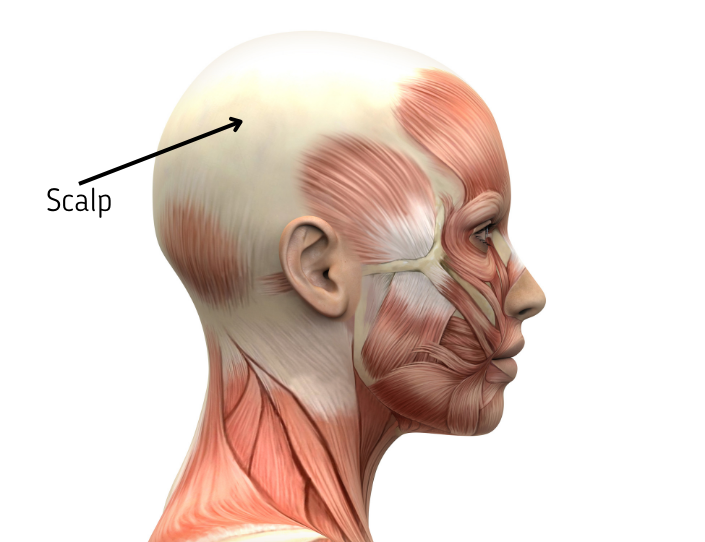The Scalp

The scalp is the anatomical region covering the top and sides of the skull, from the supraorbital ridges (above the eyebrows) to the occipital protuberance (at the back of the skull). It consists of several layers, including skin, connective tissue, muscle, and bone. The scalp is a highly vascular region with a rich blood supply from the superficial temporal and occipital arteries. The scalp serves several essential functions, including the skull's protection, the brain's insulation, and attachment sites for muscles involved in facial expression and head movement. The scalp is also an important site for hair growth and sensory perception, as it contains numerous hair follicles and nerve endings. Injuries to the scalp, such as lacerations or contusions, can be serious due to the risk of bleeding and infection. The scalp can also be involved in various medical conditions, such as alopecia (hair loss), scalp psoriasis, or scalp dermatitis.




